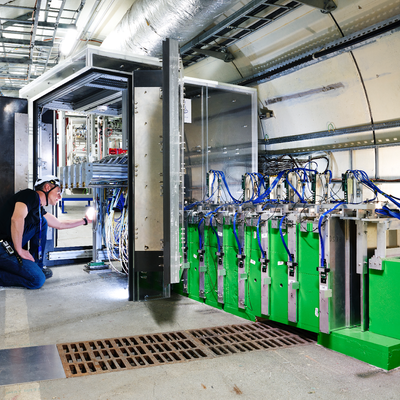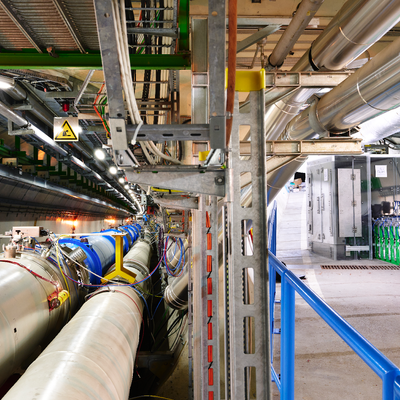About the Experiment
Located 480 m downstream of IP1 in the unused TI18 tunnel, this detector is a hybrid system consisting of an 800 kg target mass of tungsten plates, interleaved with emulsion and electronic trackers, followed downstream by a calorimeter and a muon system. This configuration allows identification and measurement of all three flavours of neutrinos produced in LHC proton-proton collisions. These are the highest-energy laboratory-produced neutrinos, with energies in the unexplored range between 100 GeV and 1 TeV. Moreover, the detector is placed close to the beam axis, in an unexplored pseudo-rapidity range of 7.2 -8.4 gives access to a large fraction of neutrinos originating from charmed-hadron decays. Neutrinos detected in the unique forward region of SND@LHC are a probe for heavy-flavour production in a region currently inaccessible to the other LHC experiments like ATLAS, CMS and LHCb. Also, studying these high energy neutrinos is of particular interest for future circular colliders and for predictions of very high-energy atmospheric neutrinos. Lastly, the detector is also sensitive to Feebly Interacting Particles (FIPs) through scattering off nuclei and electrons in the detector target. The direct-search strategy gives the experiment sensitivity in a region of the FIP mass-coupling parameter space that is complementary to other indirect searches.


